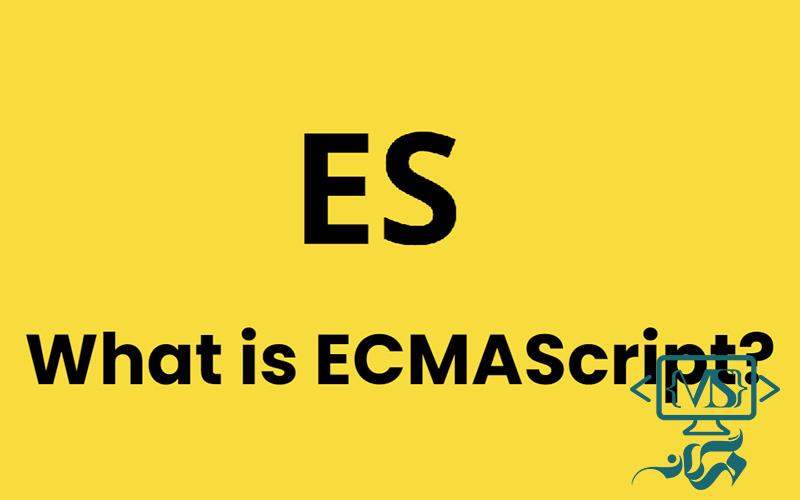
The Evolutionary Journey: A Brief History of ECMAScript
ECMAScript, commonly abbreviated as ES, is a standardized scripting language originally designed to be used alongside web browsers. Over the years, it has become the core of many programming platforms, including Node.js. In this article, we will take a nostalgic stroll through the history of ECMAScript, exploring its origins, major milestones, and the impact it has had on the world of web development.
1. The Birth of ECMAScript:
In 1997, Netscape Communications, the company behind the popular web browser Netscape Navigator, sought to create a standard scripting language for the browser. To this end, they approached the European Computer Manufacturers Association (ECMA) to develop a standardized specification for the scripting language. As a result, ECMAScript 1, the first version of the language, was born.
2. ES2 and ES3: Maturing the Language:
In 1998, ECMAScript 2 was released, introducing several new features and improvements. However, it wasn't until 1999 with ECMAScript 3 that the language truly gained widespread adoption. ES3 standardized features such as regular expressions, try-catch statements, and more. This version set the stage for the future growth and expansion of ECMAScript.
3. ECMAScript 4: The Failed Revolution:
Initially, ECMAScript 4 aimed to introduce a radical overhaul of the language, including features like optional typing, classes, and packages. However, due to disagreements and concerns among stakeholders, the development of ES4 was eventually abandoned. This led to a shift in approach, resulting in a less ambitious but more incremental progression.
4. ECMAScript 5: Stability and Wider Adoption:
In 2009, ECMAScript 5 (ES5) was released, emphasizing stability, performance improvements, and the introduction of several new features. Notable additions included Object.defineProperty for property descriptors, strict mode, JSON support, and more. ES5 played a significant role in making JavaScript a preferred language for larger-scale web applications.

5. ECMAScript 6 (ES6) and Beyond: Embracing Modernity:
Released in 2015, ECMAScript 6 (also known as ES2015) brought monumental changes and enhancements to the language. Lexical block scoping using the let and const keywords, arrow functions, class declarations, modules, and generators were among the many features introduced. ES6 marked a shift towards modern programming practices and significantly improved readability, maintainability, and developer productivity.
6. Recent Advancements and ECMAScript Today:
In the years following ES6, the ECMAScript specification has adopted a yearly release cycle, providing developers with a steady stream of new features and improvements. This approach allows for quicker adoption of new JavaScript capabilities and keeps the language at the forefront of web development.
ESNext, the term used to describe the upcoming additions to the language, includes features like optional chaining, nullish coalescing, and private fields, further enhancing JavaScript's capabilities.
Exploring the Latest Version of ECMAScript: ES2022 (ES12)
In the ever-evolving world of web development, staying up-to-date with the latest programming language features is essential. For JavaScript enthusiasts, knowing the latest version of ECMAScript, the standardized specification for JavaScript, is crucial. In this article, we'll explore the newest iteration of ECMAScript: ES2022, also referred to as ES12, and highlight some of its exciting features.
1. ES2022: The Next Evolutionary Step:
ES2022 is the latest release in the ECMAScript series, building upon the significant advancements introduced in ES6 (ES2015) and subsequent versions. Released in the year 2022, ES2022 introduces several valuable features and improvements aimed at enhancing developer productivity and codebase maintainability.
2. Prominent Features of ES2022:
a. `String.prototype.replaceAll()`: This method simplifies global string replacement by allowing developers to replace all occurrences of a substring in a string with a single function call. Previously, developers had to rely on complex regular expressions or custom implementations for this purpose.
b. `Promise.any()`: With the introduction of `Promise.any()`, developers are presented with an elegant solution to handle promises in parallel. It resolves as soon as any of the promises passed to it resolves, providing a concise and efficient approach for handling asynchronous operations.
c. Numeric Separators: ES2022 introduces a more readable and expressive way to write numeric literals by allowing underscores (_) as separators within digits. This feature helps improve code readability and makes it easier to understand large numbers.
d. Logical Assignment Operators: ES2022 includes logical assignment operators like `||=`, `&&=`, and `??=`. These operators offer shorthand assignment expressions by combining logical operators with assignment operators. They provide concise ways to update values based on logical conditions.
3. ECMAScript Proposals:
ES2022 also involves proposals for upcoming features that are in various stages of development and evaluation. Some noteworthy proposals include the pipeline operator, record & tuple types, pattern matching, and more. These proposals showcase what we can expect in future ECMAScript releases and provide insight into the continued growth and innovation of the language.
4. Adoption and Browser Support:
As ES2022 is released, it may take some time for all modern web browsers and JavaScript engines to fully implement and support its new features. Developers should refer to compatibility tables and update guidelines to ensure smooth adoption and avoid potential compatibility issues.
ES2022, or ES12, represents the latest version of ECMAScript, bringing with it several powerful features that enhance JavaScript's capabilities. Developers can leverage these features to write cleaner, more expressive code while taking advantage of improved performance and productivity. Embracing the latest version of ECMAScript ensures that web developers are equipped to build modern, efficient, and maintainable applications in line with industry standards.
Leave a comments